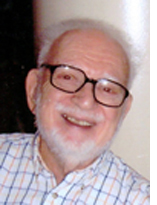By J. Zel Lurie

DELRAY BEACH, FLORIDA — Bilingual education has always attracted me. I built the first bilingual Hebrew-Arabic primary school for citizens of Israel a quarter century ago. Now there are five bilingual schools in Israel and more on the drawing boards.
I have a great-grandson in Palo Alto, Calif. He attends a public school where the teachers began talking Spanish to the kids in kindergarten. Now as he finishes second grade, his Spanish is as good as his Hebrew, which he picked up in two summer camps in Israel.
English-Spanish bilingual schools are not uncommon in California. They do not have the problems that confront the five Israeli bilingual schools.
The Israeli schools — and they are in Jerusalem, Beersheba, Kfar Kara, the Galilee and the original one in Neve Shalom/Wahat al-Salam — have the problem of teaching kids who come from separate communities who were at war 64 years ago and who have two separate narratives of what actually happened during Israel’s War of Independence.
The clashes today between Israelis and Palestinians in the occupied territories across the border is peripheral to the problem. The Jewish and Palestinian pupils in these five schools are all residents and citizens of Israel, but they have different holidays and memorial days.
The newest bilingual school in Beersheba solves the problem by celebrating all of them, every Jewish and Arab holiday and memprial day.
I visited Beersheba in 1951 as a guest of Gen. Moshe Dayan, who was then the military governor. It was then a dusty town of about 4,000 Arabs and several hundred Israeli soldiers.
It is now a bustling Israeli city of about 200,000 residents including 20,000 Arabs. In 2006, Jewish and Arab educators got together and incorporated the Hagar school for Jewish-Arab Education for Equality.
At first, they had only a kindergarten. They have grown exponentially in five years.
They now have nine classes, five are preschool, and four grades. In
September they will have five grades and they will add a grade each year.
The nine classes have 18 teachers — one Arab and one Jewish teacher in each class — with an average of 25 pupils in every class. Lauren Joseph, who does public relations for Hagar, has written a description of the school’s celebration of the Jewish and Arab holidays. Here is what she wrote with my explanatory comments in parentheses:
“During the spring months, the Hagar community marks the national days: Land Day, Holocaust Memorial Day, Memorial Day for Israel’s fallen soldiers and the victims of terrorism, Independence Day and the Nakba Day. “Throughout these days, we are evermore reminded that our community has two narratives, narratives that have a great deal of emotions folded into them. “Each member of Hagar, young and young-at-heart, grew a little bit more as individuals and as a community.
“For Israel’s Independence Day, our kindergartners talked about the significance of the flag. As a result of the conversation, the children decided that they wanted to make a special flag for the kindergarten that symbolizes their hopes for the world: a dove to bring peace, outlined in red the color of love.
“During a discussion about Land Day (which commemorates mass protests against the confiscation of land), our second graders talked about the possibilities for Jews and Arabs to approach the land with a sense of love and cooperation. They agreed that, in return, the land will continue to provide us with beautiful flowers and trees.
“Our third graders led the assembly for Israel’s Memorial Day. The event, in Hebrew and in Arabic, did not leave a dry eye in the room. The focus of the assembly was the children’s prayer for peace, that no more soldiers and civilians should die in war and that no one should ever have to feel that pain of loss ever again.
“For Holocaust Memorial Day, our fourth graders chose to focus on the meaning of being a child during the time of the Holocaust and led an expressive ceremony for the school.
“Most recently, (on May 14) each grade with their teachers remembered the lives lost in 1948 as Israel’s Independence was declared, commemorating Nakba Day (the day commemorating the Arab catastrophe.)
“During these national days, our community spent the day in nature, swimming in the Nataf springs. We specifically chose this time to come together as one community to remember that despite the emotions and the pain that this time brings to the fore, and despite the differing opinions regarding the various narratives of our history, we choose to be a part of a shared community to build a new future together, one filled with hope and peace.
“L’shalom- Ma’a Salaame”
*
Lurie is a freelance writer based in Delray Beach, Florida. He may be contacted at jzel.lurie@sdjewishworld.com